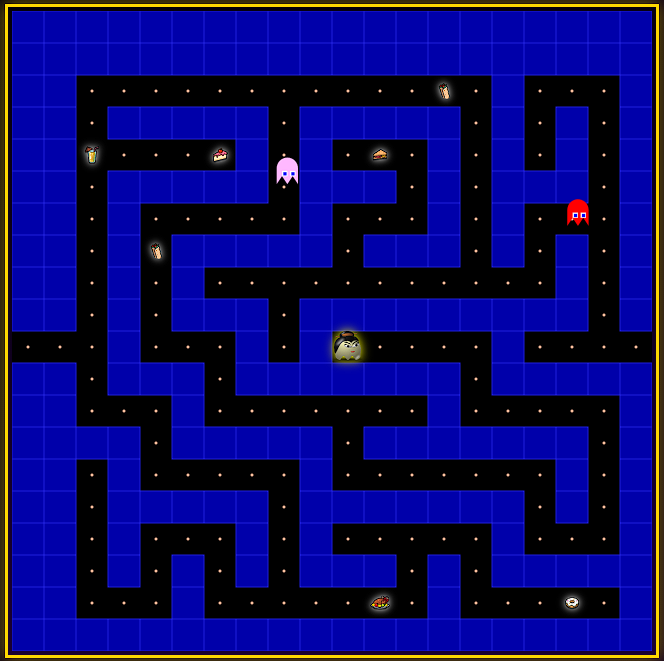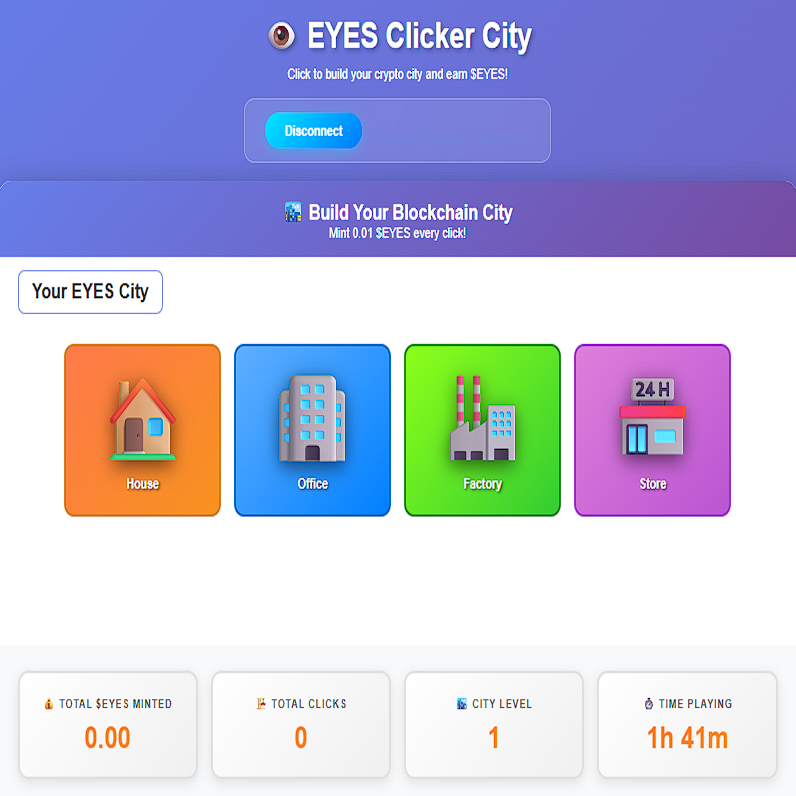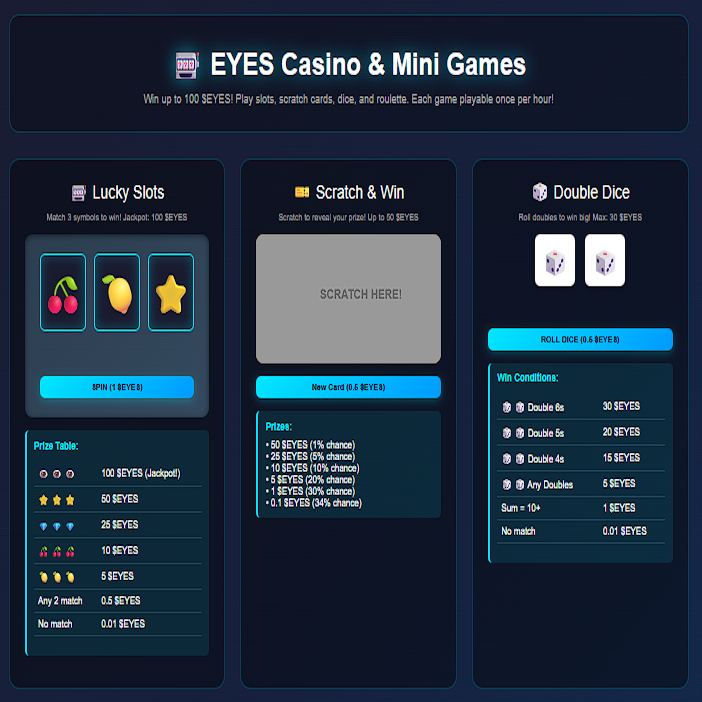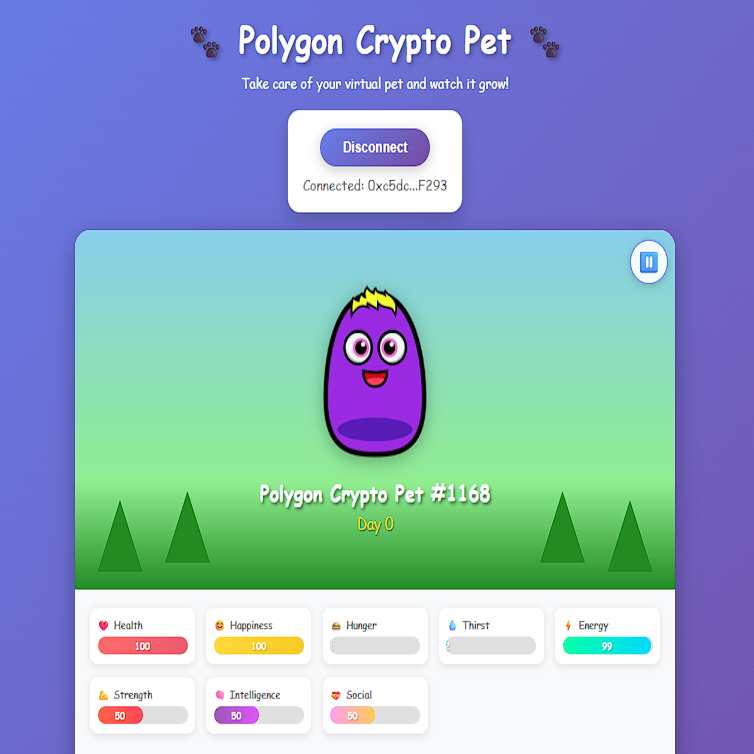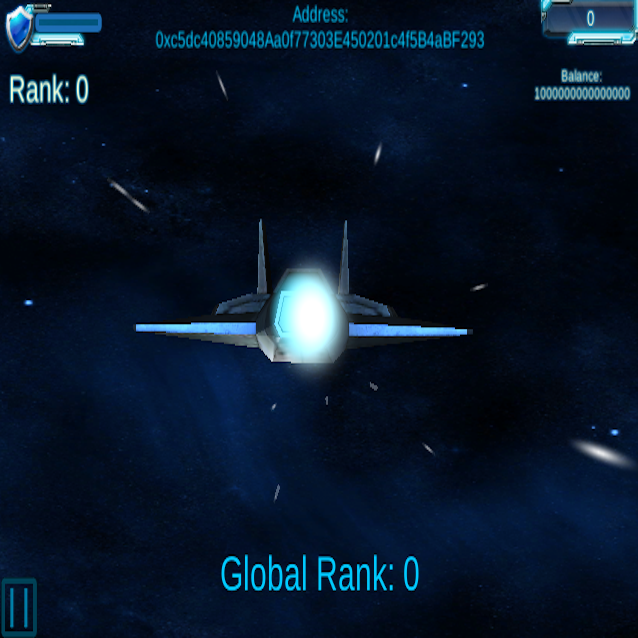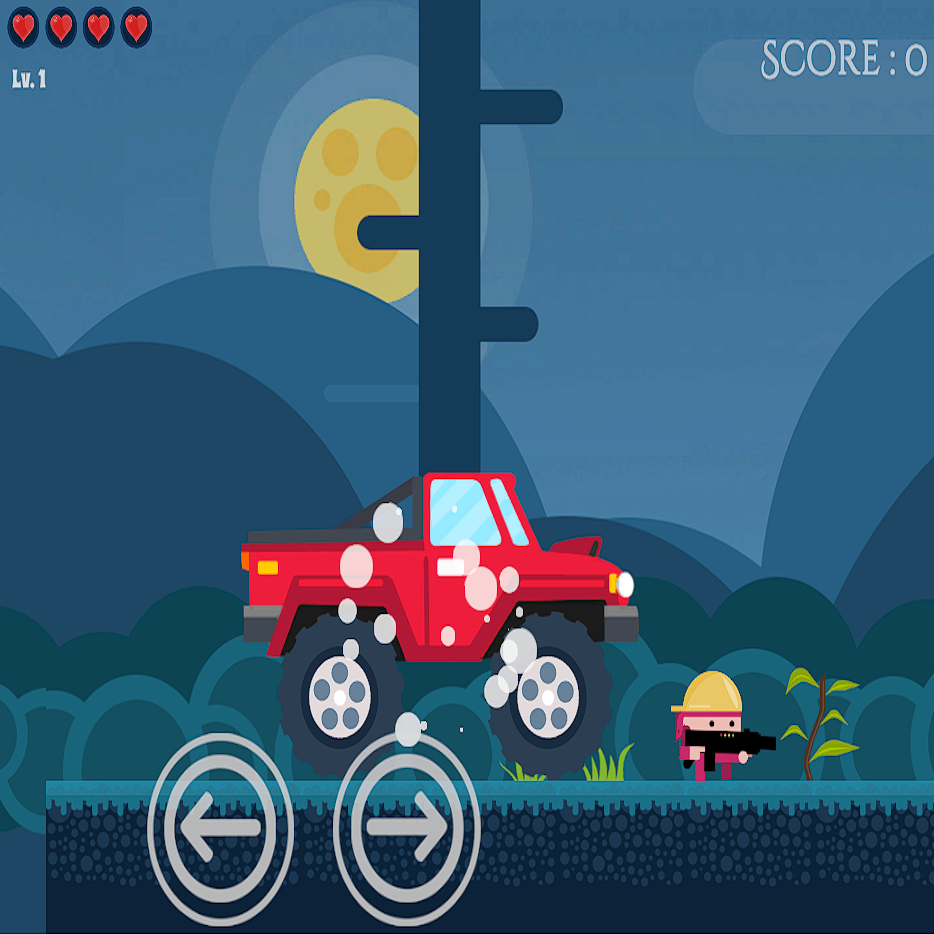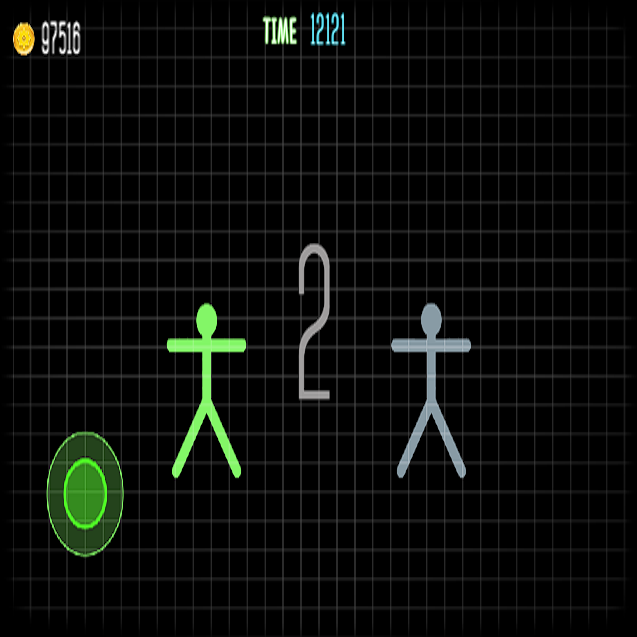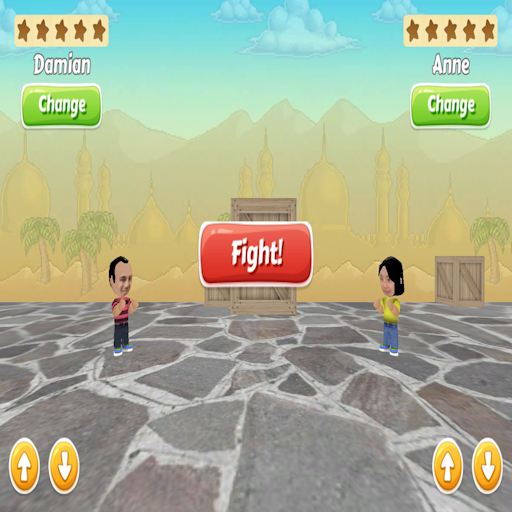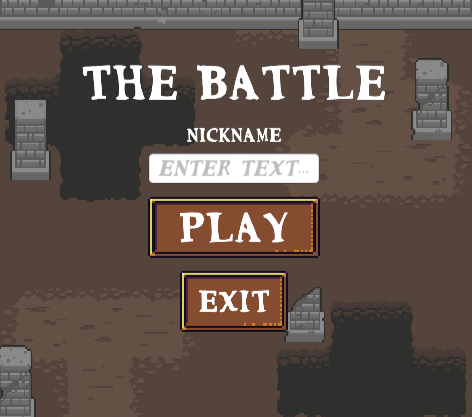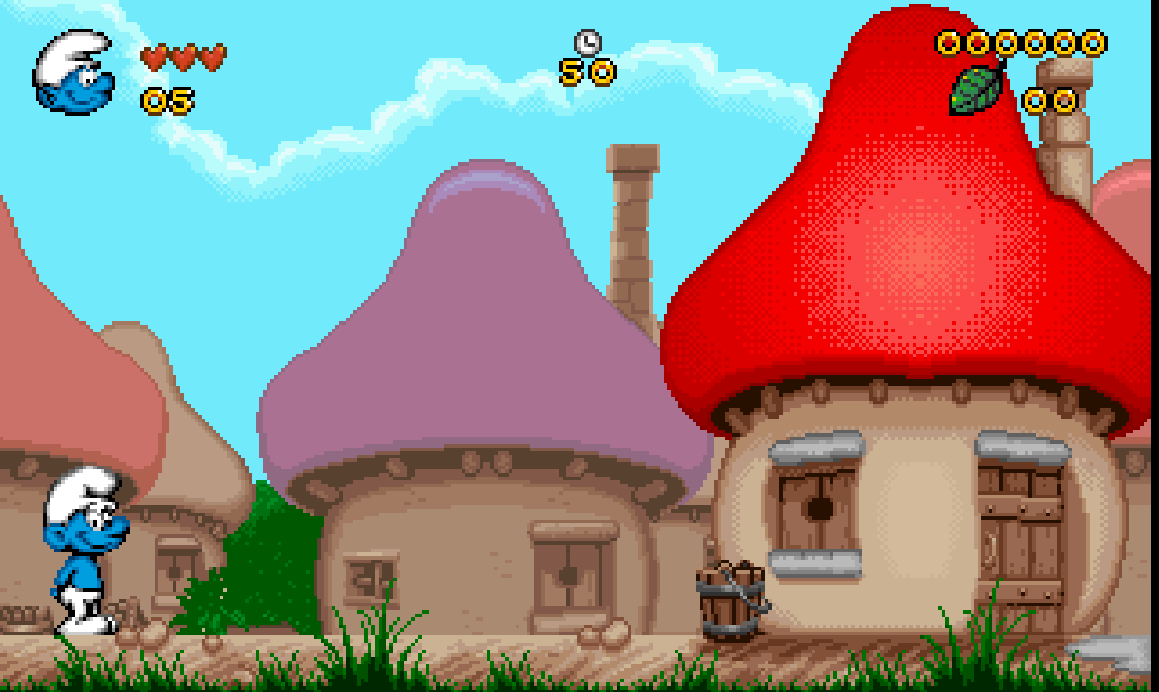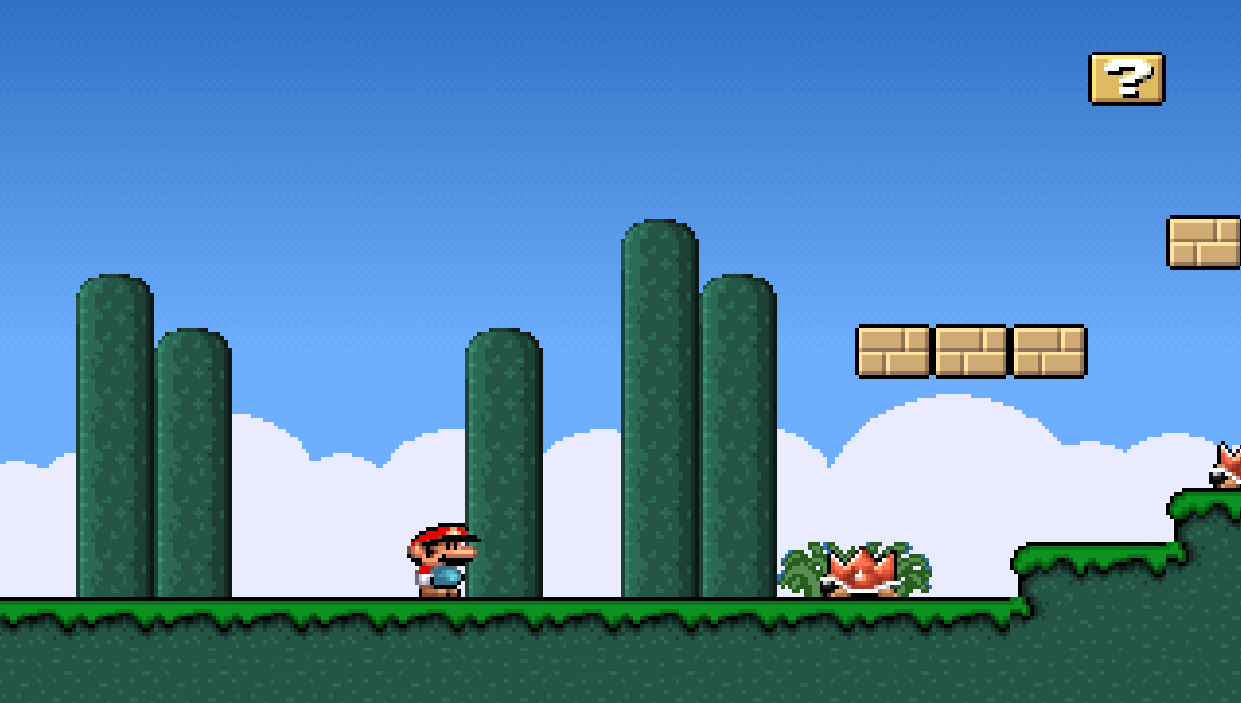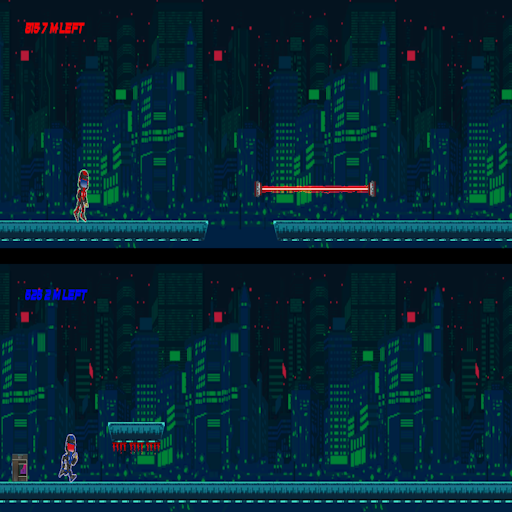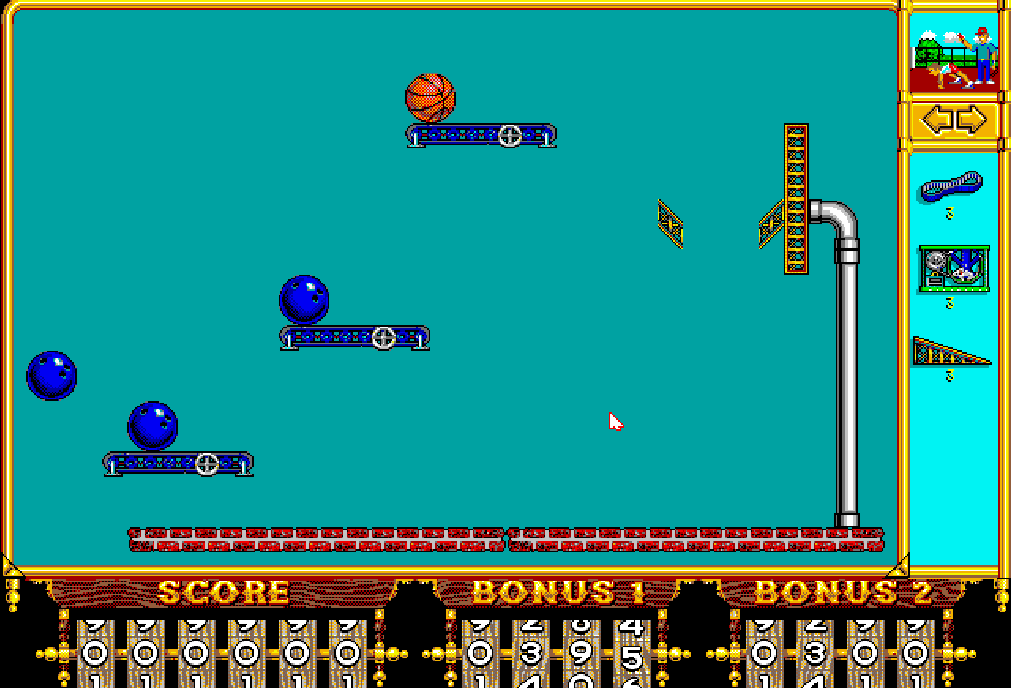Welcome to the Carnival of the Absurd
Have you ever played a game so wonderfully bonkers, so audaciously outlandish, that you wondered if the designers had slipped through a portal in their morning coffee and returned with a blueprint from some parallel dimension? If you haven’t, prepare for an odyssey through gaming’s most wildly imaginative titles. The world of video games isn’t just about grizzled soldiers or kicking soccer balls—sometimes it’s about dating pigeons, slapping a fish with a human face, or becoming a sentient slice of bread battling the perils of a dirty kitchen.
And at the gravitational center of this pixelated madness? Communities and platforms like Eye of Unity, where next-gen digital oddities, NFT-fueled social storytelling, and community creativity collide in ever crazier, greener, and more participatory virtual worlds. In an era where everyone can own a stake in the wildest gaming experiments, the borders between the unthinkable and playable are dissolving faster than a melting speedrun of Desert Bus.
Buckle up. We’re about to traverse the most funhouse-mirror-warped avenues in video game history, highlight the communities that adore them, and show you how the “crazy” factor is the heart and soul of unforgettable interactive experiences.
What Makes a Video Game “Crazy”?
Before we plunge into our digital madhouse, let’s get something straight: “crazy” in gaming isn’t just about shock value or random nonsense. It’s about originality and unpredictability—games that defy industry norms, subvert your expectations, or simply make you question the boundaries of creativity (and sanity).
Crazy games:
- Subvert genre expectations: They start familiar, then veer off a cliff (sometimes literally).
- Deliver surreal or hallucinogenic visuals and mechanics: Think shifting realities, dream logic, or psychedelic colorstorms.
- Feature offbeat premises or protagonists: Ever been a goose, a slice of bread, or a sentient fish? In crazy games, you can.
- Embrace experimental mechanics: Games that force you to type to kill zombies or use the actual power of perspective to solve puzzles.
- Generate strong loyalty and confusion in equal measure: Often dividing communities between baffled rejection and rabid cult fandom.
As the r/gamedesign community points out, “crazy” is often a proxy for daring to be different, for pushing the edge of what a “game” even is. As more game platforms become open, community-driven, and cross-medium (think Eye of Unity), invention and absurdity are only ramping up.
Legendary Titles: The Grand Hall of Gaming Madness
Ready to step inside the pantheon of bizarre brilliance? Each of the following games has earned a permanent slot in the annals of the outrageous. For each, we’ll explore what made it unforgettable, how it bent or broke gaming norms, and why communities still flock to them. If these spark your creative (or deranged?) urge, know that open and participatory platforms like Eye of Unity are paving the way for the next generation of digital oddities, with wild mechanics, NFT-powered economies, and blockchain-based story evolution.
1. Space Giraffe: A Psychedelic Arcade Epiphany
What do you get when you cross an interstellar giraffe, neon chimeras, and the mind of famed designer Jeff Minter? Space Giraffe (2007) is an acid-drenched reinvention of the arcade shooter. Imagine Tempest exploded in a digital lava lamp: pulsing lights, synesthetic soundscapes, and mechanics that demand you “manage chaos and cultivate beneficial situations” rather than just blast baddies.
With 100 heavily abstract levels and a scoring system uplifting risky, creative play, Minter’s game is both challenging and rewarding. Some critics called it “unplayable technoslop” yet for the dedicated, the game becomes a meditation on overcoming sensory overload—a metaphor for modern life filtered through pure, unrepentant weirdness.
Its cult status is cemented by its unapologetic difficulty, kaleidoscopic visuals, and the passionate defense from fans who “play until the scoring clicks and it’ll have you forever.” Space Giraffe is not just a game; it’s an experience in embracing the unfiltered, synesthetic fusion of art and play.
Why it's crazy:
- A “hallucinogenic” combination of visuals and sound—almost a playable rave.
- Arcade shooter mechanics taken to their surreal and philosophical limits.
- Simultaneously infuriating and addictive.
- Community split between those who become obsessed and those left dazed and confused.
Hyperlink: Learn about the meaning behind Space Giraffe
2. Seaman: The Pet Simulator That Stares Into Your Soul
Long before virtual pets became smartphone wallpaper, Seaman (Dreamcast, 1999) introduced gamers to the most unsettling companionship ever coded—a fish with a disturbingly realistic human face. This creature, equipped with a sarcastic personality and the eerie ability to converse via Dreamcast microphone, required daily attention, evolved bizarrely, and often insulted you for your efforts.
Seaman is less about raising a virtual pet and more about confronting digital anthropomorphism at its weirdest—a perfect storm of AI experimentation, body horror, and unsettling humor. No wonder it remains a Twitch favorite decades later; it’s a one-of-a-kind fever dream in gaming history.
Why it's crazy:
- A talking fishperson that remembers your abuse (or affection).
- Evolving mechanics that take your pet from fish to amphibian to philosophical frogman.
- Voice interactions that veer from trivia to unnerving taunts.
- Resisted all logic of conventional pet games by being deeply off-putting, yet strangely lovable.
3. Pepsiman: The Japanese Advergame Masterpiece
What’s more surreal than a superhero who runs through cities delivering Pepsi—dodging, sliding, and occasionally being chased by giant sodas? Pepsiman (PS1, 1999) is a Japan-only endless runner notorious for its ultra-strange premise, corny American live-action cutscenes, and relentless product placement.
The game stars the metallic-skinned Pepsiman, a silent mascot who “rescues” dehydrated civilians and restocks vending machines. Between levels, you watch a hillbilly binge junk food and guzzle Pepsi, apparently to… inspire you? Pepsiman’s gameplay is simple but the overall surreal experience—a fever-dream of American culture, mascots, and bizarre disasters—has made it a beloved cult classic, as evidenced by its constant reappearance at speedrun charity events and meme status.
Why it's crazy:
- One of the world’s first “endless runner” games, years before the mobile boom.
- Absolutely relentless branded content, weirdly ahead of the curve.
- Each level ends with Pepsiman being chased by enormous, animate Pepsi cans.
- Thrived as an import sensation despite never being released outside Japan; now worshipped for its meme and retro status.
Hyperlink: ‘Pepsiman’: The Cult Classic Product Placment Game
4. Goat Simulator: The Game That “Accidentally Ragdolled into Gaming History”
Born from a joke prototype and destined for meme immortality, Goat Simulator (2014) is simultaneously a parody of simulation games and a gleeful disaster zone. Your task? Cause as much mayhem as possible as a goat with a taste for destruction and defying the laws of physics. With ragdoll chaos, bug-ridden (deliberately) mechanics, and mutators that let you become a giraffe or queen of all goats, the sandbox becomes a playground for stunts, glitches, and anarchic humor.
What started as a viral video ballooned into a franchise, a thousand clones, and a legacy as the game that said “what if games were just… stupid fun sometimes?” Goat Simulator and its ilk, as the devs say, gave “players permission to just have fun. No real skill required—just pure, unfiltered nonsense.”
Why it's crazy:
- A purposely broken, bug-riddled, physics-exploiting sandbox.
- You play as a goat (or giraffe, or flamingo, or bread) wreaking havoc in creative, unpredictable ways.
- No “win” condition: pure, aimless, emergent fun.
- Gave birth to a subgenre of “meme games” and social phenomenon.
Hyperlink: The Goat Simulator Success Story
5. The Typing of the Dead: Rail Shooter Meets Keyboard School
Meet the weirdest way to hone your typing skills—and blast zombies. Typing of the Dead (1999) is a one-of-a-kind mod that took Sega’s arcade rail shooter House of the Dead 2, stripped away the lightguns, and replaced them with QWERTY accuracy. Kill zombies by quickly typing the random words, sentences, or phrases floating above their heads; the faster (and error-free) you are, the more stylish your kill.
With grindhouse aesthetics, campy humor, and one of gaming’s weirdest premises, Typing of the Dead is proof that educational games can be wickedly inventive—and is still recommended by typing teachers with a sense of menace.
Why it's crazy:
- One of the most successful genre mashups: survival horror and touch typing.
- Bizarre, frequently hilarious typing prompts, including nonsensical chains of words.
- Educational games are seldom this gleefully gory or self-aware.
- Remains a cult classic for fans of weird mechanics and the joy of vindictive speed-typing.
6. Cubivore: Survival of the Fittest: Evolve or Get Cubed
Cubivore (GameCube, 2002) is natural selection through the lens of cubism—and possibly a fever dream. In this action-adventure, you control a blocky beast that tears, eats, and mutates its way up the food chain in a bizarre, pastel wilderness. Want more limbs? Eat your enemies, mutate colors, and mate for the next generation: every new body part or hue opens up strange abilities and weirder forms, with over 150 mutations to unlock.
Everything about Cubivore is surreal, from its graphics to its gameplay loop: aggression, evolution, eating, mating, and pooping (“Taking a Doo”). Its simple but strategic combat, focus on hunting and transformation, and “love tunnel” mating mechanics are completely unlike anything before—or since. Despite its unorthodox premise, it is celebrated for its offbeat humor and hidden complexity.
Why it's crazy:
- Eat limbs and evolve—sometimes into outrageously improbable monsters.
- Mating mechanics that are both grotesque and tongue-in-cheek.
- Visually abstract world that feels like preschool gone wild.
- An early, underappreciated example of evolutionary mechanics as core gameplay.
7. Hatoful Boyfriend: Pigeon Dating Simulator Supreme
Tired of dating humans? Hatoful Boyfriend (2011) is a visual novel that asks: what if your school’s entire dating pool was comprised of sentient pigeons? Underneath the ornithological romance, the game delivers a surprisingly emotional (and sometimes chilling) mystery, earning its place as a cult classic for the brave and the bemused.
Why it's crazy:
- Unapologetically doubles down on its weird premise—no attempt to explain why everyone is a bird.
- Genuinely well-constructed story with branching paths and unexpected depth.
- Parodies, and occasionally transcends, the dating sim genre.
- Sparked multiple sequels, fan art, and devotional essays about “my perfect pigeon boyfriend.”
Hyperlink: Hatoful Boyfriend Is Still Soaring High
8. LSD: Dream Emulator: Into the Surrealist Mindscape
Based on a decade-long dream diary, LSD: Dream Emulator (PS1, 1998) is the zenith of digital surrealism. There’s no combat or clear objective; you simply navigate an ever-shifting, often deeply unnerving landscape of non sequitur imagery and hallucinatory architecture. Each dream lasts ten minutes, and interacting with anything can warp you to another dream entirely.
LSD is as close as gaming gets to experimental art, capturing the unease, ecstasy, and impossibility of dream logic. Its abstraction, looping logic, and unpredictability inspired a generation of indie developers—and baffled plenty of parents stumbling through the living room.
Why it's crazy:
- No two “dreams” are the same: procedurally assembled landscapes of pure weirdness.
- Frequently cited by game designers as the most avant-garde game of its generation.
- Impossibly unsettling one moment, delightfully absurd the next.
- Its obscurity only amplified its legendary status among the underground.
9. Getting Over It With Bennett Foddy: The Ultimate in Frustration Zen
How’s this for a pitch? You, the player, are a naked man stuck inside a cauldron, armed with only a sledgehammer as you attempt to ascend a brutal mountain of random junk. Every inch of progress can be erased by a tiny misstep, sending you tumbling down in a fit of philosophical despair, while Foddy’s calm British narration muses on persistence and failure.
Getting Over It became a viral sensation for its blend of simple controls, punishing difficulty, and existential commentary. Few games straddle the line between riotous laughter, controller-smashing frustration, and authentic insight on the human condition.
Why it's crazy:
- Infamously rage-inducing, with mechanics designed to be both silly and sadistic.
- Philosophical narration is equal parts comforting and mocking.
- Has created its own language of suffering, speedrunning, and YouTube agony-compilations.
10. Superliminal: Mind-Bending Perspectives and Dream Logic
First-person puzzler Superliminal (2019) is an Escher painting you can play. Using forced perspective, objects become exactly as big or as small as you perceive them to be. Need a huge chess piece to block a door? Tilt your view and watch it grow. Solutions require you to change your perspective—literally—challenging your sense of reality and game logic at every turn.
Beyond its mechanics, Superliminal builds a haunting dreamworld atmosphere, blending humor, unease, and pure creative glee. The effect is often mind-altering: you’ll walk away rethinking not only video games, but the limits of perception itself.
Why it's crazy:
- Mechanics twist your brain: perspective is reality.
- Deceptively simple, yet constantly surprises with new solutions and “aha!” moments.
- Narrative and aesthetic draws from Portal, but carves its own niche in surreal, dreamlike storytelling.
- Has become a touchstone for discussions about consciousness, games as art, and what digital spaces can be.
Beyond the Mainstream: Indie Madness, Simulator Delights, and Licensed Lunacy
While the games above are the rock stars of ridiculousness, the digital world is overflowing with strange and endearing oddities that push every boundary of genre, art, or narrative convention. Indie developers, unconstrained by AAA expectations, often lead the charge; at Eye of Unity, a spirit of experimentation fuels collaborative, gameplay-driven NFT worlds, and gives community creators a direct say in the brand of craziness brought to life.
Dig deeper and you’ll encounter a spectrum of interactive insanity:
-
Indie Oddballs:
- Hylics: An RPG made entirely in claymation, featuring randomly generated dialogue and surrealist battles where you level up by dying and increase mana by drinking from water coolers.
- She Dreams Elsewhere: A turn-based RPG set in a comatose woman’s dreamscape—equal parts ‘80s style, confronting mental health themes, and pure visual mindbending.
- Jazzpunk: A first-person adventure in a world of waggish spies and cyberpunk slapstick, with mechanics ranging from drone fishing to pizza delivery via the bloodstream.
- Baba Is You: Puzzle rules are just words you can push around—so “wall is stop” becomes “wall is you,” and the world bends to your linguistic will.
-
Experimental Sims:
- I Am Bread: Play as bread. Become toast. Try not to get too dirty. Seriously.
- Shower With Your Dad Simulator: Find your father in a communal shower. It’s just as weird as it sounds. Designed as a deliberate, self-aware joke for the meme crowd.
- Untitled Goose Game: Wreak havoc as a honking, mischievous goose in a sleepy English village. “Chaos as a joke” made mainstream.
-
Licensed Games Gone Berserk:
- Shaq Fu: A Legend Reborn: Basketball legend Shaquille O’Neal as a kung fu hero, featuring a campaign where Barack Obama fights Kanye West.
- Revolution X: Join Aerosmith in a dystopian future, using music to destroy evil corporate regimes.
- Chex Quest: Save the world as a sentient cereal mascot, blasting “Flemoids” to promote Chex cereal—endured as a real FPS cult classic.
- Street Fighter: The Movie: A fighting game based on a movie based on the original game—layered media weirdness at its extreme.
-
Narrative Experiments:
- Doki Doki Literature Club!: A cutesy visual novel dating simulator that sucker-punches players with psychological horror and metafictional plot twists—an icon of narrative subversion.
- Pony Island: A demonic arcade game that manipulates its own code and even your system files as you play.
- The Stanley Parable: A walking simulator where a knowing narrator comments (and sometimes fights) you every step of the way; explores the illusion of choice with wry wit.
- Immortality: An FMV game that tasks you with solving the mystery of a missing actress by digging through film scenes, with secrets that unfold into reality-bending territory.
-
Rhythm and Art Oddities:
- Samba de Amigo: Latin maracas, electric madness, and fevered rhythm keep this cult classic dancing in Dreamcast fans’ hearts.
- BPM: Bullets Per Minute: Blast your way through roguelite dungeons to the beat of a pounding soundtrack; every action synced to rhythm.
Gaming Communities: Where the Crazy Takes Root
Who keeps these mad titles alive? It’s the communities, often gathering in digital marketplaces, Discords, and decentralized collectives—like Eye of Unity—that turn games into living phenomena. Gone are the days when bizarre games were doomed to obscurity. Games like Goat Simulator owe their success to YouTubers, speedrunners, meme-makers, and platforms that celebrate rather than blacklist the “broken” or unexpected.
Why communities love crazy games:
- Shared Schadenfreude: With games designed to break you or be “enjoyably” broken, laughter through tears is a communal experience.
- Speedrunning and Competition: Few things are funnier than racing through the absurd in games that seem impossible or nonsensical.
- Modding and Remixing: Communities frequently build on the crazy, modding their own content (just as Type of the Dead fans do with custom dictionaries).
- Philosophical Embrace: Forums and social media turn the most punishing or perplexing games into memes, advice columns, and shared legends.
- DAO Governance and Community Grants: Platforms like Eye of Unity put creative power (and profit) in player hands, inviting everyone to propose, vote, and develop ever-crazier worlds.
Eye of Unity: Where Community and Craziness Collide
Unlike traditional walled-garden studios, Eye of Unity’s NFT-driven, DAO-governed platform transforms every participant into a potential creator and benefactor. Here, the wildest ideas are not just tolerated but rewarded:
- Propose rogue mechanics, surreal art, or collaborative metaverse events.
- Earn and trade NFTs representing not just pixel art, but entire game mechanics or lore contributions.
- Shape collective storytelling—where your digital oddities can, and often do, go viral.
This ecosystem—nonprofit, participatory, and eco-friendly—shows that the future of crazy games will be even more collaborative, cross-chain, and green.
The Crazy Games Table: A Quick Reference
| Game Title | Platform(s) | Genre(s) | Year | Notable Madness | Enduring Legacy |
|---|---|---|---|---|---|
| Space Giraffe | Xbox 360, PC | Shooter/Psychedelic | 2007 | Hallucinogenic visuals, intense difficulty, ledge mechanics | Cult favorite for fans of challenging, trippy games |
| Seaman | Dreamcast | Virtual Pet/AI | 1999 | Sarcastic humanoid fish, microphone conversations | AI experiment, evergreen meme material |
| Pepsiman | PS1 (Japan only) | Endless Runner/Action | 1999 | Product placement mayhem, live action cutscenes | Import legend, speedrun/fan festival icon |
| Goat Simulator | Multi-platform | Open-world “sim” | 2014 | Ragdoll glitches, nonsensical destruction, purposeful bugs | Meme progenitor, genre-creator, continuous DLCs |
| The Typing of the Dead | Dreamcast, PC | Typing/Rail shooter | 1999 | Kill zombies by typing, educational and ultraviolent | Typing game classic, streamer favorite |
| Cubivore | GameCube | Adventure/Evolution “Sim” | 2002 | Eat, mutate, mate, “take a Doo,” 150+ beast forms | Cult RPG, praised for inventiveness |
| Hatoful Boyfriend | Multi-platform | Visual Novel/Dating Sim | 2011 | Romance pigeons (or die trying), dark narrative twists | Visual novel meme, international hit |
| LSD: Dream Emulator | PS1 (Japan only) | Exploration/Surrealist | 1998 | Randomized dream worlds, no objectives, pure abstraction | Cited as avant-garde, inspires surreal indies |
| Getting Over It | Multi | Physics/Frustration sim | 2017 | Sledgehammer climbing, random objects, philosophical narration | YouTube legendary, speedrun agony competitions |
| Superliminal | Multi | First-Person Puzzle | 2019 | Perspective becomes game mechanic, shifting realities, dream therapy | Modern surreal puzzle darling |
| Doki Doki Literature Club! | Multi-platform | Visual Novel/Horror | 2017 | Dating sim turns psychological horror meta-narrative | Viral hit, analysis darling |
Final Thoughts: The Future Is Even Crazier
As the digital landscape builds ever more powerful tools for player-generated content, decentralized governance, and cross-platform interoperability, the age of the crazy video game has only just begun. Projects like Eye of Unity demonstrate the future: a borderless, boldly participatory metaverse where community, creativity, and chaos rule supremely.
Whether you’re a diehard fan of retro oddities or a daring creator looking to pitch the next big (or bonkers) thing, there’s never been a better time to celebrate—and create—the insane, the inventive, and the ingeniously weird. So crack open that cafeteria of digital wildness, join the muchness on Eye of Unity, and remember: the only real rule is that there are no rules when art and play collide.
Now go—download something bizarre, honk like a goose, and get ready to add your own chapter to the story of gaming’s fun-loving, unpredictable, ever-expanding mad universe.
Smart Links and Further Exploration:
- Explore Eye of Unity’s community-powered gaming ecosystem
- Read more about the creation and cultural impact of Goat Simulator
- Deep dive into the dizzying mechanics of Space Giraffe
- Discover the wild world of Pepsiman and its modern cult status
- See how communities are influencing the future of experimental games on Eye of Unity
Sponsored Spotify Music Playlists:
https://systementcorp.com/matchfy
Other Websites:
https://opensea.io/eyeofunity/galleries
